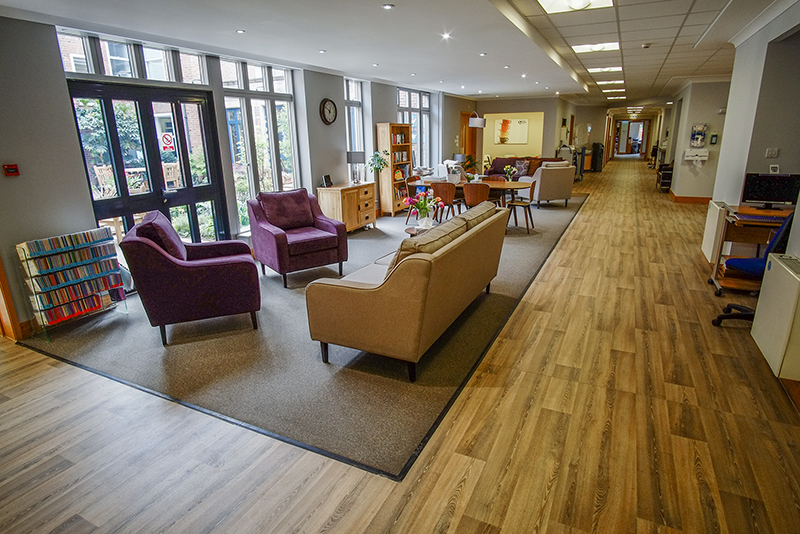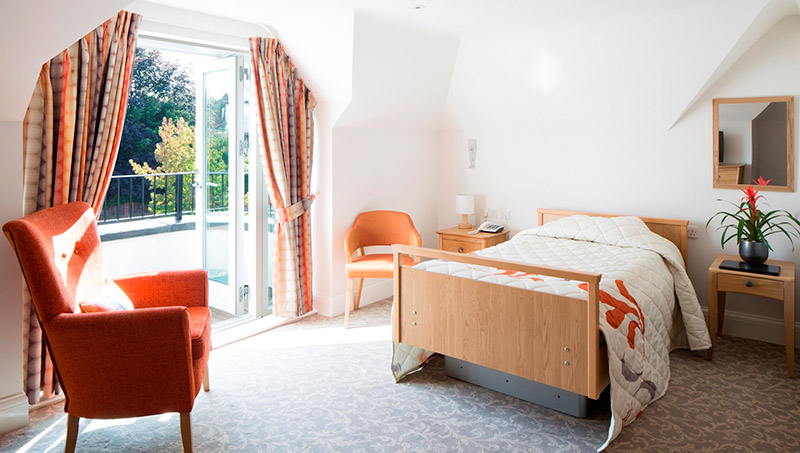Q&A: Martin Quirke, Architect and PhD Researcher Dementia Services Development Centre
Our focus this month is Emotion and with that in mind, we have looked at how design can effect emotions in a healthcare environment, where emotions can be exaggerated and fragile.
Martin Quirke, joined the University of Stirling design team in 2016. Having worked across a broad spectrum of project types, from housing to public buildings, Martin’s strongest area of expertise is design for ageing, especially residential aged care communities. As an expert in the healthcare field we wanted to ask him a few questions about how emotion can be considered when designing for these types of environments.
 What are they key things to remember when designing to counter impairments linked to Dementia?
What are they key things to remember when designing to counter impairments linked to Dementia?
There are three things to bear in mind when designing for people with dementia: First, people with dementia tend to experience problems with memory, which affects their ability to remember for example the way between two spaces in a building or neighbourhood. Second, the often simultaneous loss cognitive capacity, reduces the person’s ability to problem solve, focus on important information, and filter out un‐important information. Thirdly, the majority of people with dementia also have at least one further impairment such as hearing loss, poor eyesight, restricted mobility, or a combination of these. The challenges associated with other impairments tend to be exaggerated by the dementia.
Dementia friendly design incorporates not only design for cognitive impairment but also design for physical disability, visual impairment and hearing loss. Good design for dementia is therefore also good design for almost everyone else.
Photo provided by JB Commercial
How can you tackle different negative emotions that dementia patients go through, with design?
The majority of emotional and distressed behaviours associated with dementia are not caused by the condition itself, but are manifestations of frustration as the person experiences a loss of their sense of ‘choice and control’ over their surroundings. Design that helps them to understand their surroundings, enables them to engage in familiar ordinary activities that they enjoy, encourages social interaction, and leads to overall improvements in health and wellbeing.
“Design that helps them to understand their surroundings, enables them to engage in familiar ordinary activities”
How can design bring people out from a sad, lonely feelings?
People with dementia are no more predisposed to depression or loneliness than others, but they may be less able to self‐direct their response to it. Research evidence shows that design can help by:
encouraging social interaction at both intimate and community scales, by encouraging physical activity, preferably outdoors; through daily exposure to direct sunlight. In the, often restricted,
residential care setting, design and care management play equally critical roles in enabling and encouraging these activities. The design of the space between the front door of a person’s house, and
the street can be instrumental in helping the person to develop and maintain a social network, whereas the positioning of inviting comfortable and supportive seating along a corridor, or along a
path in a garden can help support private conversation, or prompt casual interaction.
Image provided by Skopos
What does dementia‐friendly design do to help?
First and foremost, the first aim of dementia should be to enable independence. We do this by highlighting helpful stimulus, and reducing unhelpful stimulus, whilst ensuring that any safety
measures, where necessary, are as unobtrusive as possible This not only satisfies the persons own desire to feel that they have the freedom to continue doing things for themselves, but also reduces
the burden on others. A few short examples of dementia friendly features follow:
The most dementia friendly buildings tend to have layouts that ensure visibility between the most important spaces, especially between main social spaces and toilets. Where direct visibility is not
possible then other multi-sensory cues can help. Signage can help people find their way, and can be especially valuable in helping people locate the nearest toilet, often needed at short notice. Making it possibly to see into social spaces as you approach them, whether through open plan layouts, or glazed elements in walls and doors, can help, as can furniture that is familiar in appearance help people to identify the purpose of each space. Good dementia friendly design also avoids the use of noisy equipment and call systems, as well as limiting the size of social spaces in order to reduce the disabling and distressing effect of noise caused by large numbers of people. Interior designers can help by providing tonal contrast to items we want people to see; contrast between furniture and the floor underneath can help to prevent tripping, and to improve confidence of people using them. Conversely, avoiding contrast between some elements can be useful. Ensuring minimal tonal contrast between adjacent areas of level flooring can reduce the tendency for people with dementia to perceive a physical step, thereby reducing the frequency of injury and hospitalisation from falls.
Image provided by Modulex
We have seen an increase in the use of the arts to help offer lasting benefits for dementia, Can you give us any examples of this?
There are diverse range of activities now recognised as having the ability to provide beneficial outcomes for people with dementia, and these are not limited to the formal arts. There is evidence
for example that ordinary activities of daily living such as washing dishes or hanging out laundry helps people to sustain independence in other key activities of maintaining independence such as getting dressed. There are many reports of people with dementia benefiting from table‐tennis and tri‐cycle tours, and several studies involving music have now recognised its significant potential for positive therapeutic benefit.
Whilst it is important to understand is that no one activity is ever likely to be helpful for all people affected by dementia, the key component is that the activity is meaningful to the individual. This is achieved by taking into account their life experiences, previous roles, and hobbies. Most importantly we need to remove any assumptions about each individual’s potential ability to participate or enjoy an activity.
How can technology and design adaptions help with dementia patients?
Technology can be helpful in a variety of ways for both the person with dementia and those caring for them. Many use technology as unobtrusive means of avoiding conventional safety precautions. The use of location identifiers, door and movement sensors, power socket monitors can provide reassurance to family and carers whilst allowing people with dementia to retain maximum levels of independence. This can remove the need for care homes to lock doors, and prevent or delay the decision by family to admit a person to formal care.
In health and care settings, technology such as bed pressure sensors can be linked to both lighting systems, guiding someone to the toilet at night for example, and to the care management system, simultaneously reducing the need for staff to disturb residents as frequently during night time checks, but also alerting them to a potential fall in the event that the person does not return to bed within the time frame that they usually would.




